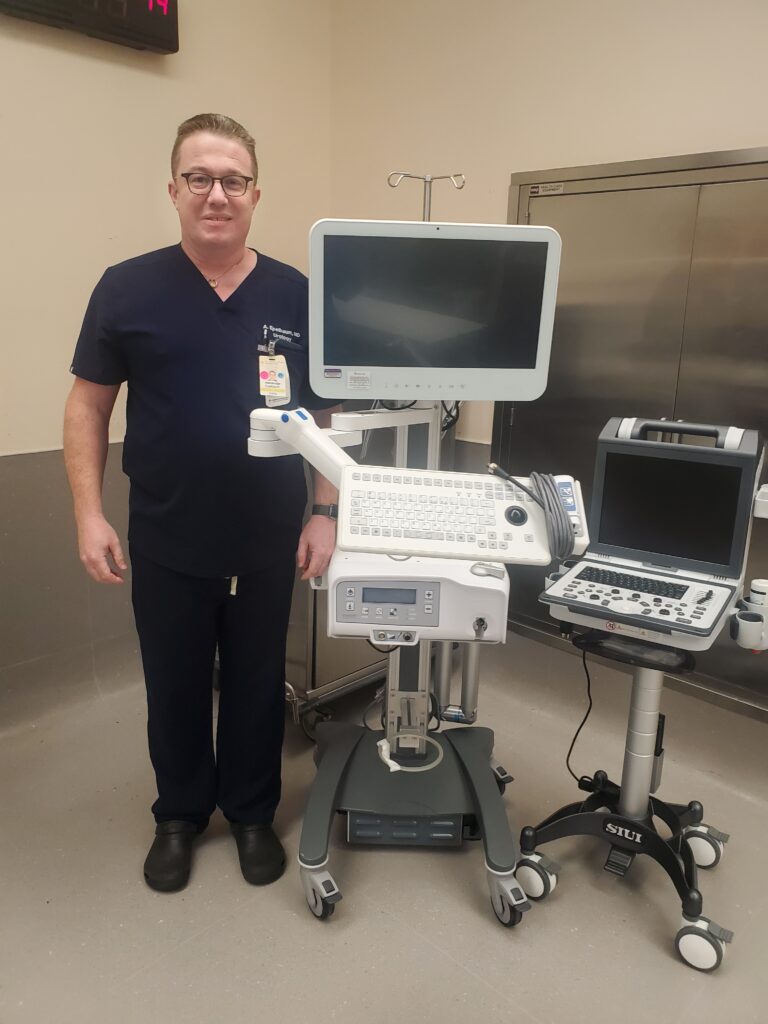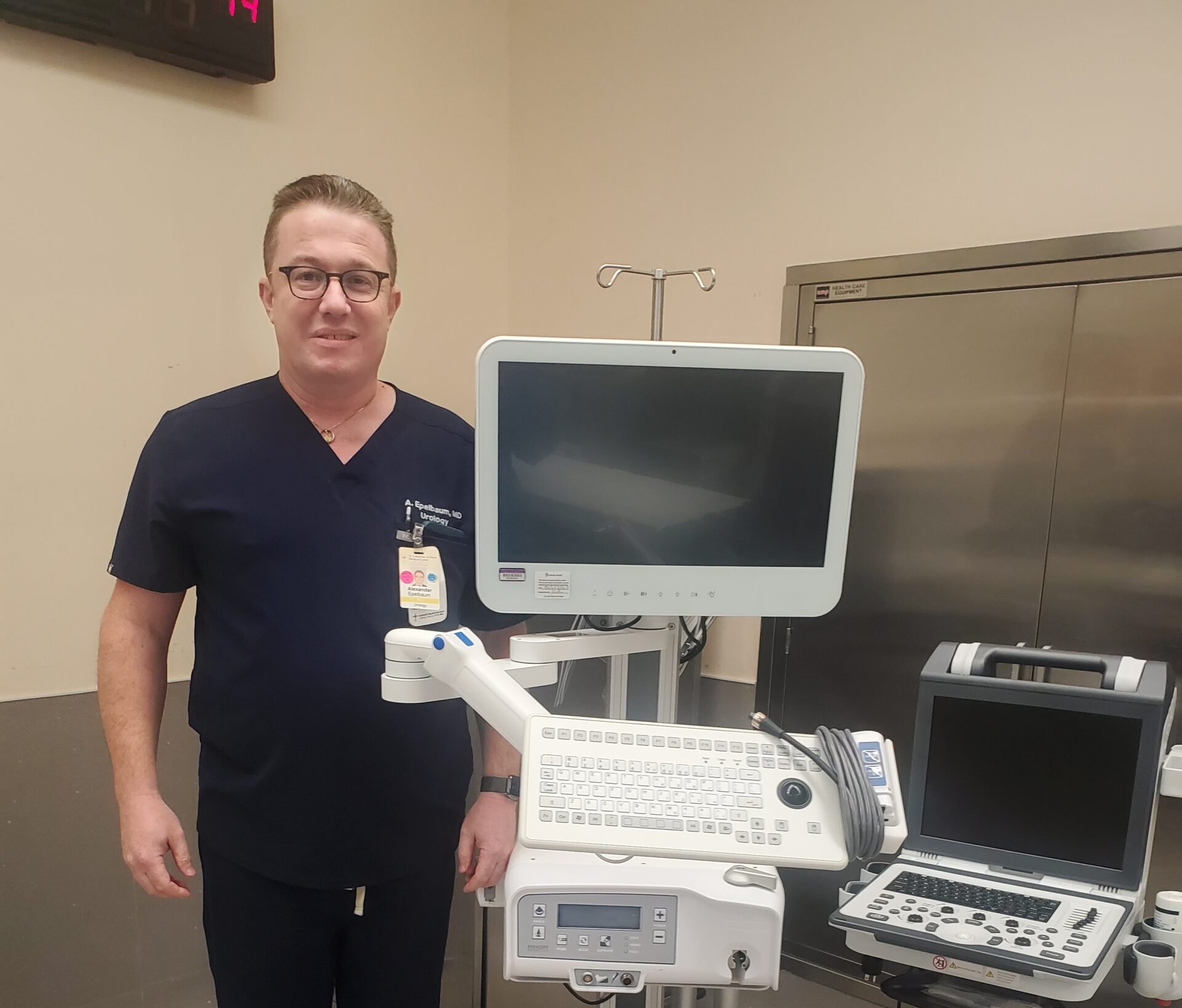Benign prostatic hyperplasia (BPH), also known as an enlarged prostate, is a common medical problem unique to men. BPH is a non-cancerous condition where the prostate becomes larger than normal and causes symptoms affecting urination and sexual function. One in two men, ages 51-60, have BPH and the incidence increases every decade of life.
BPH, when untreated, can cause significant health problems, including bladder stones, incontinence and even irreversible bladder or kidney damage.
There is a new and promising procedure for treating BPH known as the AquaBeam® Robotic System. This advanced technological system is the first FDA-approved, surgical robot used for tissue resection of the prostate, in the treatment of BPH.
St. Catherine of Siena Hospital in Smithtown, a member of the Catholic Health System, is the first Hospital in Suffolk County to perform the new technique. “Aquablation® therapy is the next step in furthering our commitment to robotic surgery and men’s health,” said St. Catherine of Siena Hospital President James O’Connor.
The Messenger recently discussed the new procedure with the Director of Robotic Surgery at St. Catherine of Siena Hospital, Dr. Alexander Epelbaum. Dr. Epelbaum has now treated 22 patients with the new AquaBeam® Robotic System and has been pleased with the results thus far. Dr. Epelbaum, a Board- Certified Urologist, explained that “conventional surgical techniques for BPH have been associated with complications such as incontinence and sexual dysfunction. ”However, Aquablation® therapy is unique because the new technology allows for preservation of sexual function,” says Dr. Epelbaum.

Patients are usually able to return home the next day and men can resume all their normal daily activities three to four weeks after surgery.
It’s all about precision. Says Dr. Epelbaum, we can “map and target the tissue we want to remove using multi-dimensional imaging via ultrasound and cystoscopy; thus personalizing the treatment for each individual patient.” This allows for “targeted and controlled removal of prosthetic tissue.” Once the map is complete, the robotically controlled, waterjet stream ablates the prostate tissue, avoiding critical structures to preserve sexual function and continence. The mapping and ablation are performed as a single surgical procedure in the OR under general anesthesia.
Two other conditions where robotic surgery is being utilized are hernias and cholecystectomies.
Dr. Epelbaum, who is fairly tech savvy in his own right, works closely with the tech experts at AquaBeam® to ensure that the robotic equipment is always functioning properly. Dr. Epelbaum further stated patients undergo a comprehensive evaluation process and testing, including a cystoscopy and ultrasound, before it is determined they are a candidate for the procedure. The procedure itself takes about 40 minutes.
As of now, Medicare has approved coverage for the procedure, as has United Healthcare. More plans are expected to approve it as well, opines Michelle Pipia-Stiles, Director of Public and Community Relations at the Hospital.
If you have BPH, or would like more information on the AquaBeam® Robotic System for the treatment of BPH, Dr. Epelbaum is conducting a Zoom lecture on the procedure on June 15. You can visit the Huntington Public Library website to register or call (631) 862-3523.






